|
Books Should Be Free Loyal Books Free Public Domain Audiobooks & eBook Downloads |
|
|
Books Should Be Free Loyal Books Free Public Domain Audiobooks & eBook Downloads |
|
Nature Books |
|---|
Book type:
Sort by:
View by:
|
By: Anna Botsford Comstock (1854-1930) | |
|---|---|
 Handbook of Nature-Study, Part 1
Handbook of Nature-Study, Part 1
Handbook of Nature-Study was written by Anna Botsford Comstock during an era of growing societal concern for man's treatment of the natural world. Out of this concern grew the nature study movement which sought to teach science to school children (and others) through direct observation of nature by the students themselves instead of by the study of nature books. The book is written as a guide for teachers instructing their classes in nature study and includes a wealth of information about plants, animals, the earth, and the sky along with suggestions for guiding students in their observations... | |
By: Aristotle (384 BC - 322 BC) | |
|---|---|
 Physics
Physics
Physics (Greek: Φυσικὴ ἀκρόασις; Latin: Physica, or Physicae Auscultationes) discusses concepts including: substance, accident, the infinite, causation, motion, time and the Prime Mover. | |
By: Christiaan Huygens (1629-1695) | |
|---|---|
 Treatise on Light
Treatise on Light
Treatise on Light was published in 1690 and is probably the largest scientific volume on light published before Newton's Opticks. The book explains how light travels (i.e., that it has a certain velocity), and what happens when it hits a surface (refraction and reflection). A large portion of the book is devoted to the double refraction occurring in Iceland chrystal, and all drawn conclusions are proved geometrically. Christiaan Huygens (1629 - 1695) was a prominent physicist and astronomer. His main discoveries are the centrifugal force, collision laws for bodies and the argument that light consists of waves... | |
By: Nessmuk (1821-1890) | |
|---|---|
 Woodcraft
Woodcraft
George Washington Sears, who many know better by his pen name "Nessmuk", was an outdoor writer during the last half of the 19th century, writing most often for the magazine "Field and Forest", the predecessor of today's "Field and Stream". "Woodcraft" is his book for "outers" with his tips on how to "smooth it" rather than rough it in the woods. Although some of his methods, equipment and mores may be out of date or objectionable to modern readers, his stories of true wilderness travel tinged with his subtle humor still have messages for those venturing out of doors... | |
By: Pliny the Elder (23-79) | |
|---|---|
 Natural History Volume 3
Natural History Volume 3
Naturalis Historia (Latin for "Natural History") is an encyclopedia published circa AD 77-79 by Pliny the Elder. It is one of the largest single works to have survived from the Roman empire to the modern day and purports to cover the entire field of ancient knowledge, based on the best authorities available to Pliny. The work became a model for all later encyclopedias in terms of the breadth of subject matter examined, the need to reference original authors, and a comprehensive index list of the contents... | |
By: Various | |
|---|---|
 Birds and All Nature, Vol. V, No 3 March 1899
Birds and All Nature, Vol. V, No 3 March 1899
"Birds and All Nature" was a monthly publication of the Nature Study Publishing Company of Chicago. It includes short poems and brief descriptions of birds, animals and other natural subjects with accompanying color plates. The magazine was published from 1897-1907 under the various titles, "Birds," "Birds and all Nature," "Nature and Art" and "Birds and Nature." | |
 Birds and All Nature, Vol. V, No 2 February 1899
Birds and All Nature, Vol. V, No 2 February 1899
"Birds and All Nature" was a monthly publication of the Nature Study Publishing Company of Chicago. It includes short poems and brief descriptions of birds, animals and other natural subjects with accompanying color plates. The magazine was published from 1897-1907 under the various titles, "Birds," "Birds and all Nature," "Nature and Art" and "Birds and Nature." | |
 Birds and All Nature, Vol. V, No 1, January 1899
Birds and All Nature, Vol. V, No 1, January 1899
"Birds and All Nature" was a monthly publication of the Nature Study Publishing Company of Chicago. It includes short poems and brief descriptions of birds, animals and other natural subjects with accompanying color plates. The magazine was published from 1897-1907 under the various titles, "Birds," "Birds and all Nature," "Nature and Art" and "Birds and Nature." | |
 Birds and all Nature, Vol. IV, No 4, October 1898
Birds and all Nature, Vol. IV, No 4, October 1898
"Birds and All Nature" was a monthly publication of the Nature Study Publishing Company of Chicago. It includes short poems and brief descriptions of birds, animals and other natural subjects with accompanying color plates. The magazine was published from 1897-1907 under the various titles, "Birds," "Birds and all Nature," "Nature and Art" and "Birds and Nature." These short pieces are pleasant listening for anyone with a love of nature. "In those vernal seasons of the year, when the air is calm and pleasant, it were an injury and sullenness against Nature not to go out and see her riches and partake in her rejoicing with heaven and earth." —Milton. | |
 Birds and all Nature, Vol. IV, No 3, September 1898
Birds and all Nature, Vol. IV, No 3, September 1898
"Birds and All Nature" was a monthly publication of the Nature Study Publishing Company of Chicago. It includes short poems and brief descriptions of birds, animals and other natural subjects with accompanying color plates. The magazine was published from 1897-1907 under the various titles, "Birds," "Birds and all Nature," "Nature and Art" and "Birds and Nature." | |
 Birds and All Nature, Vol. IV, No 2, August 1898
Birds and All Nature, Vol. IV, No 2, August 1898
"Birds and All Nature" was a monthly publication of the Nature Study Publishing Company of Chicago. It includes short poems and brief descriptions of birds, animals and other natural subjects with accompanying color plates. The magazine was published from 1897-1907 under the various titles, "Birds," "Birds and all Nature," "Nature and Art" and "Birds and Nature." Good listening for anyone with a love of nature! | |
 Birds and All Nature, Vol. IV, No 6, December 1898
Birds and All Nature, Vol. IV, No 6, December 1898
"Birds and All Nature" was a monthly publication of the Nature Study Publishing Company of Chicago. It includes short poems and brief descriptions of birds, animals and other natural subjects with accompanying color plates. The magazine was published from 1897-1907 under the various titles, "Birds," "Birds and all Nature," "Nature and Art" and "Birds and Nature." | |
 Birds and All Nature, Vol. IV, No 5, November 1898
Birds and All Nature, Vol. IV, No 5, November 1898
"Birds and All Nature" was a monthly publication of the Nature Study Publishing Company of Chicago. It includes short poems and brief descriptions of birds, animals and other natural subjects with accompanying color plates. The magazine was published from 1897-1907 under the various titles, "Birds," "Birds and all Nature," "Nature and Art" and "Birds and Nature." | |
 Birds and All Nature, Vol. IV, No 1, July 1898
Birds and All Nature, Vol. IV, No 1, July 1898
"Birds and All Nature" was a monthly publication of the Nature Study Publishing Company of Chicago. It includes short poems and articles describing birds, animals and other natural subjects with accompanying color plates. The magazine was published from 1897-1907 under the various titles, "Birds," "Birds and all Nature," "Nature and Art" and "Birds and Nature." These short pieces are perfect for a first recording or for anyone with a love of nature. | |
By: Adelia B. Beard (1857-1920) | |
|---|---|
 On The Trail: An Outdoor Book for Girls
On The Trail: An Outdoor Book for Girls
Lina and Adelia Beard, co-founders of the first American girls' scouting group, originally called the Girl Scout Society, then the Girl Pioneers, and finally as the Camp Fire Girls, provide practical advice and encouragement to girls and young women who wish to explore a "free, wholesome, and adventurous outdoor life." - Summary by Christine Lehman, aka stoogeswoman | |
By: Albert Einstein (1879-1955) | |
|---|---|
 Sidelights on Relativity
Sidelights on Relativity
Sidelights on Relativity contains ETHER AND THE THEORY OF RELATIVITY, an address delivered on May 5th, 1920, in the University of Leyden; and GEOMETRY AND EXPERIENCE, an expanded form of an address to the Prussian Academy of Sciences in Berlin on January 27th, 1921. (Intro from Project Gutenberg) | |
By: Alexander von Humboldt (1769-1859) | |
|---|---|
 Cosmos: A Sketch of a Physical Description of The Universe: Introduction
Cosmos: A Sketch of a Physical Description of The Universe: Introduction
Friedrich Wilhelm Heinrich Alexander von Humboldt was a Prussian geographer, naturalist, explorer, and influential proponent of romantic philosophy. Many consider him to be the last of the great polymaths. After his death in 1859, the scientific world began to divide into separate disciplines, each with its own knowledgeable but narrowly defined experts. Humboldt’s mind encompassed all that was then known of nature in one great whole. He could well be considered the father of modern ecology and earth studies... | |
By: Alfred North Whitehead (1861-1947) | |
|---|---|
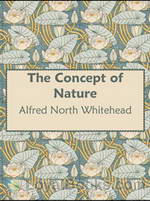 The Concept of Nature
The Concept of Nature
In The Concept of Nature, Alfred North Whitehead discusses the interrelatedness of time, space, and human perception.The idea of objects as ‘occasions of experience’, arguments against body-mind duality and the search for an all-encompassing ‘philosophy of nature’ are examined, with specific reference to contemporary (Einstein, with whose theory of relativity he has some complaints) and ancient (Plato, Aristotle) approaches. | |
By: Algernon Blackwood (1869-1951) | |
|---|---|
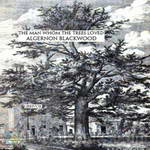 The Man Whom the Trees Loved
The Man Whom the Trees Loved
The story of a man’s deep connection with nature and his wife’s fear of it. | |
By: Amos Alonzo Stagg (1862-1965) | |
|---|---|
 Scientific and Practical Treatise on American Football for Schools and Colleges
Scientific and Practical Treatise on American Football for Schools and Colleges
Ever wondered how football has changed over the years? Look no further! This selection of rules, positions, and explanations of how football was played in the late 1800s is sure to leave you with a greater knowledge of the evolution of the sport. | |
By: Arabella B. Buckley (1840-1929) | |
|---|---|
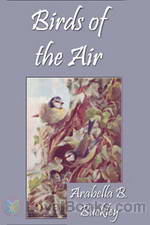 Birds of the Air
Birds of the Air
Arabella Buckley had a great love of nature and wished to impart that love to children. Birds of the Air will encourage children to observe birds in their natural environment and notice the habits of each particular bird they encounter. | |
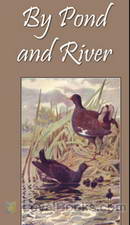 By Pond and River
By Pond and River
In By Pond and River, another of Arabella Buckley’s wonderful science books for children, she explains the habitats of ponds and rivers, exposing children to the animals and plant life that are found there. | |
By: Aristotle (384-422) | |
|---|---|
 On the Heavens
On the Heavens
On the Heavens (Greek: Περί ουρανού, Latin: De Caelo or De Caelo et Mundo) is Aristotle's chief cosmological treatise. In it Aristotle argues that the Earth is a sphere by pointing to the evidence of lunar eclipses. Aristotle also provides a detailed explanation of his theory of 'gravity' arguing that things which contain 'earth' fall towards the centre of the Universe because 'earth' is naturally attracted to the centre of the Universe. Aristotle argues that if the planet Earth was moved to the location of the Moon then objects which contain 'earth' would not fall towards the centre of the Earth but rather towards the centre of the Universe... | |
 On Generation and Corruption
On Generation and Corruption
On Generation and Corruption (Ancient Greek: Περὶ γενέσεως καὶ φθορᾶς, Latin: De Generatione et Corruptione, also known as On Coming to Be and Passing Away) is a treatise by Aristotle. Like many of his texts, it is both scientific and philosophic (although not necessarily scientific in the modern sense). The philosophy, though, is essentially empirical; as in all Aristotle's works, the deductions made about the unexperienced and unobservable are based on observations and real experiences... | |
 History of Animals
History of Animals
Book I Grouping of animals and the parts of the human body. Book II Different parts of red-blooded animals. Book III Internal organs. Book IV Animals without blood . Books V & VI Animal reproduction. Book VII Human reproduction. Book VIII Habits . Book IX Social behavior. Book X Dealing with barrenness in women was excluded from the translation of D'Arcy Thompson for being spurious so the translation of the Clergyman Richard Cresswell is used instead. Sir D'Arcy Wentworth Thompson was a biologist, mathematician and classicist who also wrote On Growth and Form which discusses the mathematical patterns and structures formed in plants and animals. | |
By: Arthur Henry Patterson (1857-1935) | |
|---|---|
 Man and Nature on the Broads
Man and Nature on the Broads
From its man-made origins as a consequence of medieval peat excavations, the Broads of Norfolk and Suffolk have evolved into a natural ecosystem, providing habitat for a diverse range of flora and fauna , as well as a means of livelihood for the inhabitants of this region. In the company of the book’s author, a self-taught lifelong naturalist and undisputed expert of the Broads , we discover how the life of the Broads unfolds over the course of a single year. So, why not listen in, and join us... | |
 Wild Life on a Norfolk Estuary
Wild Life on a Norfolk Estuary
Published in 1907 by Arthur Henry Patterson, a self-taught local naturalist, Wild Life on a Norfolk Estuary was one of his defining books on the seasonal nature and natural history of the Norfolk Broads. The book is presented in two sections - The first part documents life on and around Breydon Water and the Broads throughout each season of the year, whilst the second part is a continuation of a previous AHP book – Notes of an East Coast Naturalist. AHP’s approachability, enthusiasm and extensive knowledge of the natural history of the Broads region would allow him to develop regular contacts with a wide range of fellow naturalists... | |
 Notes of An East Coast Naturalist
Notes of An East Coast Naturalist
Arthur Henry Patterson was a self-taught naturalist with an immeasurable knowledge and perspicacity of the Broadland region’s flora and fauna – especially the area around Great Yarmouth and Breydon Water. He was the author of many books about Broadland and was a regular and popular contributor to the local county newspaper. From an early age, he developed an affinity with the natural history of the Broads and kept extensive daily notes on the area’s wildlife – which ultimately led him to collate and distil the observations that he had recorded over 25 years into this book... | |
 Through Broadland in a Breydon Punt
Through Broadland in a Breydon Punt
Arthur Henry Patterson was a self-taught naturalist who, from a very early age, devoted much of his free time to observing, discovering and documenting all aspects of the natural history of the Norfolk Broads, especially the area around Breydon Water near his home town of Great Yarmouth. At some 75000 acres , the Broads are the largest protected wetland in Britain. AHP was the author of many books about Broadland as well as submitting numerous papers and articles to nature societies and journals... | |
By: Arthur Scott Bailey | |
|---|---|
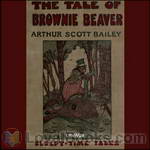 The Tale of Brownie Beaver
The Tale of Brownie Beaver
Arthur Scott Bailey was the author of more than forty children’s books, centered all his plots in the animal, bird and insect worlds, weaving natural history into the stories in a way that won educator’s approval without arousing the suspicions of his young readers. The Tale of Brownie Beaver is another adventure of the friends and neighbours of Pleasant Valley. You will hear how Brownie keeps a house safe from a Freshet and how he receives his weekly newspaper and not to forget the making of a new suit. | |
By: Bradford Torrey (1843-1912) | |
|---|---|
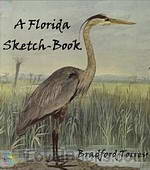 A Florida Sketch-Book
A Florida Sketch-Book
This is a series of late-19th Century essays about Florida’s flora & fauna written by a Massachusetts-based naturalist. | |
By: Brontë sisters | |
|---|---|
 Selected Poems by Currer, Ellis and Acton Bell
Selected Poems by Currer, Ellis and Acton Bell
Poems by Currer, Ellis and Acton Bell was a volume of poetry published jointly by the three Bronte sisters, Charlotte, Emily and Anne in 1846, and their first work to ever go in print. To evade contemporary prejudice against female writers, the Bronte sisters adopted androgynous first names. Marked by profound sentiments, gravity and melodious harmony, the poems are strewn on the fields of soulful love, rueful reminiscence and the immortal yearnings of a Christian soul, and represent a fragrant assemblage of noetic flowers from the glebes of olden England... | |
By: C. C. James (1863-1916) | |
|---|---|
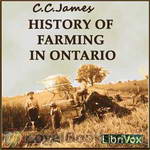 History of Farming in Ontario
History of Farming in Ontario
This paper takes the reader through the early settlement from 1783 to the modern period of 1888-1912. We see how farming and farm industries developed and how the population was distributed during these times. We see the trends of settlers moving into the Urban centers instead of rural and how the farm industries (making cheese, butter, wool, etc) move off the farm to the city factories. Excerpt: “The farmer’s wife in those days was perhaps the most expert master of trades ever known. She could spin and weave, make a carpet or a rug, dye yarns and clothes, and make a straw hat or a birch broom... | |
By: C. J. Dennis (1876-1938) | |
|---|---|
 Ruined Reversolet
Ruined Reversolet
LibriVox volunteers bring you 16 recordings of A Ruined Reversolet by C. J. Dennis. This was the Weekly Poetry project for October 28, 2012.Clarence James Dennis was an Australian poet and journalist. In his varied career, he worked as a barman, shearer, solicitor's clerk, newspaper proprietor and (as do many Australians) a civil servant, before settling down in a rural retreat at Toolangi, in the Dandenong Ranges, east of Melbourne.His most famous work is "The Songs of a Sentimental Bloke", a verse novel written in an Australian vernacular and first published in 1915... | |
By: Carl Parcher Russell (1894-1967) | |
|---|---|
 One Hundred Years In Yosemite: The Story Of A Great Park And Its Friends
One Hundred Years In Yosemite: The Story Of A Great Park And Its Friends
This recording of the 1931 book about Yosemite National Park comprises the narrative text about the Park from its discovery by non-natives in the Indian War of 1851 to the mid-twentieth century. The printed book contains dozens of early photographs and drawings, as well as an extensive timeline and bibliography, which are not here recorded. The author was an ecologist, historian, and administrator. He was an officer of the U.S. National Park Service for thirty four years, serving as the Chief Naturalist of Yosemite from 1923-1929 and later as Park Superintendent. - Summary by David Wales | |
By: Caroline Kane Mills Everett (1867-1921) | |
|---|---|
 Privilege of Pain
Privilege of Pain
We have seen that as mankind rises in the scale of civilization the body becomes increasingly less important. Nevertheless, I wish it to be clearly understood, that I do not maintain that it is preferable to be ill than well, but only that each state has its own peculiar privileges, which are rarely interchangeable. Health and sickness are merely different roads to achievement. The earth requires rain as well as sunshine; we need both tears and laughter; navvies are necessary and so are philosophers... | |
By: Cecil Warburton | |
|---|---|
 Spiders
Spiders
The mental capacity of spiders; web architecture; spiders that live under water, even though they need air to breath; spiders that mimic ants; spiders that mimic bird droppings; cannibalism; odd spider mating rituals--these are just some of the topics in this lively book about the modes and habits of common spiders, written by a zoologist. - Summary by Sue Anderson | |
By: Charles A. Higgins | |
|---|---|
 Titan Of Chasms: The Grand Canyon Of Arizona
Titan Of Chasms: The Grand Canyon Of Arizona
This is a 1906 collection of three essays by men famously associated with The Grand Canyon: Charles A. Higgins, John Wesley Powell, and Charles F. Lummis. - Summary by david wales | |
By: Charles Alexander Eastman (1858-1939) | |
|---|---|
 The Soul of the Indian
The Soul of the Indian
"We also have a religion which was given to our forefathers, and has been handed down to us their children. It teaches us to be thankful, to be united, and to love one another! We never quarrel about religion." | |
By: Charles Darwin (1809-1882) | |
|---|---|
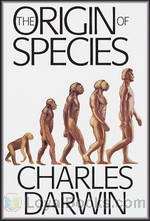 On the Origin of Species by Means of Natural Selection
On the Origin of Species by Means of Natural Selection
Considered to be one of the books that changed the world and how we view ourselves, On The Origin of Species by Charles Darwin was met with incredulous horror when it was first published in 1859. The revolutionary, almost blasphemous ideas it described were seen as antithetical to the existing ideas of Creation contained in the Bible and other religious texts. It was mocked, reviled and the author was personally subjected to vicious persecution by the establishment and theologians. In the years that followed its publication, the book became the subject of furious intellectual and social debate... | |
By: Charles Godfrey Leland (1824-1903) | |
|---|---|
 Algonquin Legends of New England or Myths and Folk Lore of the Micmac, Passamaquoddy, and Penobscot Tribes
Algonquin Legends of New England or Myths and Folk Lore of the Micmac, Passamaquoddy, and Penobscot Tribes
This work, then, contains a collection of the myths, legends, and folk-lore of the principal Wabanaki, or Northeastern Algonquin, Indians; that is to say, of the Passamaquoddies and Penobscots of Maine, and of the Micmacs of New Brunswick. All of this material was gathered directly from Indian narrators, the greater part by myself, the rest by a few friends; in fact, I can give the name of the aboriginal authority for every tale except one. | |
By: Charles Holder (1851-1915) | |
|---|---|
 Half Hours With the Lower Animals
Half Hours With the Lower Animals
This book is devoted to the study of invertebrate animals. While most people associate the word "animal" with fish, amphibians, reptiles, birds, and mammals, 90% of the animal species on earth are invertebrates, i.e., they have no backbone. Protozoans and invertebrate animals are found world-wide, from the bottom of the oceans to the the rain forests, ice caves, and our own back yards. Many invertebrates still reside in the oceans, while others dwell in our houses, back yards and gardens, in ponds and streams, and on the menus in seafood restaurants... | |
By: Charles Hoy Fort | |
|---|---|
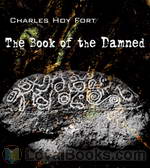 The Book of the Damned
The Book of the Damned
The Book of the Damned was the first published nonfiction work of the author Charles Fort (first edition 1919). Dealing with various types of anomalous phenomena including UFOs, strange falls of both organic and inorganic materials from the sky, odd weather patterns, the possible existence of creatures generally held to be mythological, disappearances of people under strange circumstances, and many other phenomena, the book is historically considered to be the first written in the specific field of anomalistics. – | |
By: Charles McRae | |
|---|---|
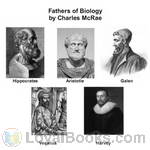 Fathers of Biology
Fathers of Biology
An account given of the lives of five great naturalists (Hippocrates, Aristotle, Galen, Vesalius and Harvey) will not be found devoid of interest. The work of each one of them marked a definite advance in the science of Biology. There is often among students of anatomy and physiology a tendency to imagine that the facts with which they are now being made familiar have all been established by recent observation and experiment. But even the slight knowledge of the history of Biology, which may be obtained from a perusal of this little book, will show that, so far from such being the case, this branch of science is of venerable antiquity... | |
By: Charles Morris (1833-1922) | |
|---|---|
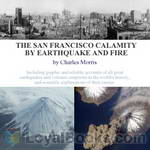 The San Francisco Calamity by Earthquake and Fire
The San Francisco Calamity by Earthquake and Fire
The first half of this book describes the devastating earthquake that hit San Francisco in 1906, and the subsequent destruction caused by fire. Various eyewitnesses and victims give their account on the tragedy. In the second half, a number of different other earthquakes and volcanic eruptions are retold, like the eruption of the Vesuvius that destroyed Pompeij or the explosion of the Krakatoa, together with scientific explanations for the causes of earthquakes and the eruption of volcanos. | |
By: Clarence King (1842-1901) | |
|---|---|
 Mountaineering in the Sierra Nevada
Mountaineering in the Sierra Nevada
"Mountaineering in the Sierra Nevada" is a memoir by Clarence King of his adventures and work with the California Geological Survey. King later led a major survey along the 40th Parallel in the American West and then was appointed the first director of the new U.S. Geological Survey.King's 1872 "Mountaineering in the Sierra Nevada" exhibits a modern sense of timing and insight, and his accounts of hand-and-foot rock climbing seem as fresh as last week's blog post. He was part of the Victorian wave... | |
By: D. B. Casteel (1877-1958) | |
|---|---|
 Behavior of the Honey Bee in Pollen Collecting
Behavior of the Honey Bee in Pollen Collecting
The value of the honey bee in cross pollinating the flowers of fruit trees makes it desirable that exact information be available concerning the actions of the bee when gathering and manipulating the pollen. The results recorded in this manuscript are also of value as studies in the behavior of the bee and will prove interesting and valuable to the bee keeper. The work here recorded was done by Dr. Casteel during the summers of 1911 and 1912. | |
By: Dillon Wallace (1863-1939) | |
|---|---|
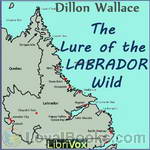 The Lure of the Labrador Wild
The Lure of the Labrador Wild
The Lure Of The Labrador Wild is a account of a expedition by Leonidas Hubbard, an adventurer and journalist to canoe the system Naskaupi River - Lake Michikamau in Labrador and George River in Quebec. His companions on this journey were his friend, New York lawyer Dillon Wallace and an Indian guide from Missannabie, George Elson. From the start, the expedition was beset with mistakes and problems. Instead of ascending the Naskaupi River, by mistake they followed the shallow Susan Brook. After hard long portaging and almost reaching Lake Michikamau, with food supplies running out, on September 15 at Windbound lake, they decided to turn back... | |
By: Edmund Christopherson (1903-1974) | |
|---|---|
 Night The Mountain Fell; The Story Of The Montana-Yellowstone Earthquake
Night The Mountain Fell; The Story Of The Montana-Yellowstone Earthquake
A severe earthquake, centered in the vacation area of West Yellowstone, Montana, shook the ground and its inhabitants and visitors on August 17, 1959, at 11.37 pm. A mountainside fell, a lake formed, roads and houses disappeared, people were trapped, people died. The author of this narrative went to the area the day after the quake, took first-hand stories of the catastrophe, researched in the following months, and wrote this account within a year of the shaking. The printed source has many informative photographs. - Summary by David Wales | |
By: Edna Brush Perkins (1880-1930) | |
|---|---|
 The White Heart of Mojave
The White Heart of Mojave
"The White Heart of the Mojave" recounts a 1920's adventure "in the wind and sun and big spaces" of Death Valley by two independent minded women, Edna Brush Perkins and Charlotte Hannahs Jordan. Both women were early feminists, Edna as chairwoman of the greater Cleveland Woman's Suffrage Party (1916-18). At the end of the Great War, the two friends wanted nothing more than to escape "to the solitariness of some wild and lonely place far from city halls, smokestacks, national organizations, and streets of little houses all alike... | |
By: Edna W. Underwood (1873-1961) | |
|---|---|
 Letters from a Prairie Garden
Letters from a Prairie Garden
The "Letters from a Prairie Garden," are genuine letters and not fiction. They went through the mail. An explanatory word about their origin may not be amiss. Some years ago a famous artist came to a certain mid-western city on business connected with his profession. He had an acquaintance who lived in the hotel where the writer lived at that time and with whom he talked over the phone. The writer frequently happened to be talking at the same time, and the wires crossing, he heard me laugh repeatedly, and he nicknamed me "the woman who laughs... | |
By: Edwin E. Slosson (1865-1929) | |
|---|---|
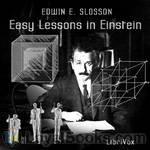 Easy Lessons in Einstein
Easy Lessons in Einstein
Published in 1920, Slosson’s Easy Lessons in Einstein is one of the first popularizations of Einstein’s theory of relativity. This book is meant to convey to the general reader the ideas of relativity in non-mathematical terms, by the use of thought experiements and pop-cultural references of the day. This edition also includes a short article by Einstein on Time, Space and Gravitation. | |
By: Elisha Gray (1835-1901) | |
|---|---|
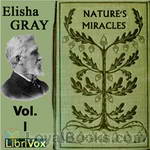 Nature's Miracles: Familiar Talks on Science
Nature's Miracles: Familiar Talks on Science
Elisha Gray (August 2, 1835 – January 21, 1901) was an American electrical engineer who co-founded the Western Electric Manufacturing Company. Gray is best known for his development of a telephone prototype in 1876 in Highland Park, Illinois and is considered by some writers to be the true inventor of the variable resistance telephone, despite losing out to Alexander Graham Bell for the telephone patent. | |
By: Elizabeth Grinnell (1851-1935) | |
|---|---|
 Our Western Birds
Our Western Birds
This mother and son team, each distinguished in their field, collaborate to give charming portraits of common birds of the western United States from the western robin and cedar waxwing to the crow and roadrunner. The book is written in a plain and accessible style designed to stimulate an interest in nature among young people and give us a deeper appreciation of these birds and their charm. - Summary by Larry Wilson | |
 Birds of Song and Story
Birds of Song and Story
This mother and son team, each distinguished in their field, collaborate to give charming portraits of a dozen of our favorite song birds. Their use of poetry and flowing prose makes each of these birds come alive in and endearing and accessible way. - Summary by Larry Wilson | |
By: Elizabeth von Arnim (1866-1941) | |
|---|---|
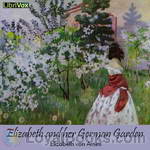 Elizabeth and her German Garden
Elizabeth and her German Garden
Elizabeth and Her German Garden is a novel by Elizabeth von Arnim, first published in 1898; it was very popular and frequently reprinted during the early years of the 20th century. The story is a year's diary written by the protagonist Elizabeth about her experiences learning gardening and interacting with her friends. It includes commentary on the beauty of nature and on society, but is primarily humorous due to Elizabeth's frequent mistakes and her idiosyncratic outlook on life. She looked down upon the frivolous fashions of her time writing "I believe all needlework and dressmaking is of the devil, designed to keep women from study... | |
By: Ellison Hawks (1889-1971) | |
|---|---|
 Bees, Shown to the Children
Bees, Shown to the Children
A very good introduction to the bee, including its physical and behavioral characteristics. Most appropriate for children. - Summary by KevinS | |
By: Emily Dickinson | |
|---|---|
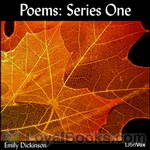 Poems: Series One
Poems: Series One
Renowned poet Emily Dickinson (1830 – 1886) wrote many many poems. This collection, “Poems: Series One”, presents the first installment of the complete poetic works of Miss Emily Dickinson. It is broken into four parts: Life, Love, Nature, and Time and Eternity. The verses of Emily Dickinson belong emphatically to what Emerson long since called “the Poetry of the Portfolio,”–something produced absolutely without the thought of publication, and solely by way of expression of the writer’s own mind. The poetry found here is then entirely honest, and indicative of the authors true feelings. | |
By: Enos A. Mills (1870-1922) | |
|---|---|
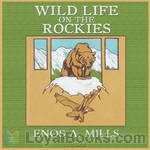 Wild Life on the Rockies
Wild Life on the Rockies
“This book contains the record of a few of the many happy days and novel experiences which I have had in the wilds. For more than twenty years it has been my good fortune to live most of the time with nature, on the mountains of the West. I have made scores of long exploring rambles over the mountains in every season of the year, a nature-lover charmed with the birds and the trees. On my later excursions I have gone alone and without firearms. During three succeeding winters, in which I was a Government Experiment Officer and called the “State Snow Observer,” I scaled many of the higher peaks of the Rockies and made many studies on the upper slopes of these mountains.” | |
By: Ernest Thompson Seton | |
|---|---|
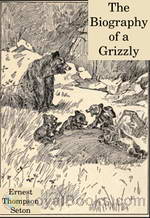 The Biography of a Grizzly
The Biography of a Grizzly
I first read this little book when I was in the fifth grade, and now more than fifty years later, I still find it fascinating. Ernest Thompson Seton was a man with a concern for nature her creatures and an excellent story teller. I could almost feel Wahb, the great grizzly’s pain and frustration as he tried to avoid contact with humans and just be left alone to carry out his bear business. Listening to this audio book will be an hour and a half well spent.Summary by Mike Vendetti, Narrator. | |
By: Ernst Dieffenbach (1811-1855) | |
|---|---|
 Travels in New Zealand with contributions to the geography, geology, botany, and natural history of that country, Vol. I
Travels in New Zealand with contributions to the geography, geology, botany, and natural history of that country, Vol. I
“Let the reader imagine a deep lake of a blue colour, surrounded by verdant hills; in the lake several islets, some showing the bare rock, others covered with shrubs, while on all of them steam issued from a hundred openings between the green foliage without impairing its freshness: on the opposite side a flight of broad steps of the colour of white marble with a rosy tint, and a cascade of boiling water falling over them into the lake!” Such is Ernest Dieffenbach’s description of his first glance of the White Terraces in Lake Rotomahana, see cover image... | |
By: Ethel Twycross Foster (1881-1963) | |
|---|---|
 Little Tales of the Desert
Little Tales of the Desert
A six year-old girl named Mary spends Christmas vacation with her parents in the Arizona desert of 1901 or thereabouts. | |
By: Eugen Sandow (1867-1925) | |
|---|---|
 Strength and How to Obtain It
Strength and How to Obtain It
In writing this book I have taken it as a commonplace that everyone—man, woman, and child—wants to be strong. Without strength—and by strength I mean health, vitality, and a general sense of physical well-being—life is but a gloomy business. Wealth, talent, ambition, the love and affection of friends, the pleasure derived from doing good to those about one, all these things may afford some consolation for being deprived of life’s chief blessing, but they can never make up for it. “But,”... | |
By: F. Matthias Alexander (1869-1955) | |
|---|---|
 Constructive Conscious Control of the Individual
Constructive Conscious Control of the Individual
F. Matthias Alexander was an Australian actor, author and educator, who is best known as the inventor of Alexander Technique, a method for "unlearning" acquired habits of movement and posture that are harmful or suboptimal, and allowing natural, healthy patterns of body use to emerge in their place. Alexander Technique is now taught by specially trained instructors through in-person lessons around the world, and is particularly popular among musicians and other performance artists. In this 1923 book, considered by many to be his best, Alexander explains the principles of his technique and the theory behind it... | |
By: Fannie Hardy Eckstorm (1865-1946) | |
|---|---|
 The Woodpeckers
The Woodpeckers
The Woodpeckers is a wonderful introduction to the world of bird study for the young naturalist, covering such topics as how he finds food, courting, how he builds his nest, the interesting ways he uses his different body parts as tools, among other topics discussed in the book. If you wish to investigate further, the book has a few diagrams and an Appendix that contains more technical information such as detailed descriptions of the different species of North American woodpeckers which were not read as part of this audiobook. | |
By: Florence A. Merriam (1863-1948) | |
|---|---|
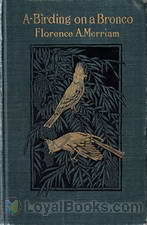 A-Birding on a Bronco
A-Birding on a Bronco
Florence Augusta Merriam Bailey (August 8, 1863 - September 22, 1948) was an American ornithologist and nature writer. She started observing bird behavior at a time when most bird study was based on collections and skins. By 1885, she began to write articles focusing on protecting birds. Her introduction of a birdwatching field guide, aimed at living birds, is considered the first in the tradition of modern bird guides. She wrote the first of these at the age of 26, initially as a series of notes in the Audubon Magazine and later as books. In "A-Birding on a Bronco," she writes an engaging memoir about her several trips to study birds on a ranch in California in the late 1800's. | |
By: Florence Holbrook (1860-1932) | |
|---|---|
 Book of Nature Myths
Book of Nature Myths
This is a book of myths told by the Indians of North America to their children. They could be compared to present day Fairy Tales. | |
By: Francis Edward Tourscher (1870-1939) | |
|---|---|
 Work Of The Sisters During The Epidemic Of Influenza October, 1918
Work Of The Sisters During The Epidemic Of Influenza October, 1918
In 1918 over 2,000 Roman Catholic nuns left their convents in the Philadelphia area to nurse the sick and dying of the influenza epidemic. Twenty-three of the sisters died because of their ministrations. This is an account of their heroic work published in the American Catholic Historical Society Of Philadelphia, 1919. “Gathered and arranged from reports of personal experiences of the sisters and contributed by request of the compiler.” The compiler/author was an academic/priest at Villanova University in Pennsylvania. Since there are no chapter headings, this recording uses the section headings of the book. - Summary by David Wales and book's subtitle | |
By: Francis Rolt-Wheeler (1876-1960) | |
|---|---|
 Science - History of the Universe Vol. 6: Zoology & Botany
Science - History of the Universe Vol. 6: Zoology & Botany
Multi-volume work on science edited by Francis Rolt-Wheeler. The sixth volume is on Zoology written by Dr. WM. D. Matthew and on Botany written by Marion E. Latham. The section on Zoology examines the development, evolution and distribution of animals. It further discusses types of animals - invertebrates and vertebrates. The section on botany touched on early development of botany and delved on structures and reproduction of plants. Development of the study of morphology and plant cell anatomy and variations were also examined. | |
By: Frank Albert Waugh (1869-1943) | |
|---|---|
 Dwarf Fruit Trees
Dwarf Fruit Trees
This book is a handbook for the home orchardist. The propagation, pruning, choice of variety, and management of dwarf fruit trees, specifically apples, pears, peaches, and plums, are outlined. In addition, there is a section on berry bushes. It is geared towards gardeners in the United States of America and Canada. - Summary by A. Gramour | |
By: Frank Evers Beddard (1858-1925) | |
|---|---|
 Book of Whales
Book of Whales
A Book of Whales is a natural history of whales for the layman. - Summary by A. Gramour | |
By: Frank Thomas Bullen (1857-1915) | |
|---|---|
 Idylls Of The Sea And Other Marine Sketches
Idylls Of The Sea And Other Marine Sketches
In these little sketches [1899] of a few out of the innumerable multitude of ways in which the sea has spoken to me during my long acquaintance with it, I have tried with ’prentice hand to reproduce for shore-dwellers some of the things it has told me. His whales and sharks and other monsters of the deep are creatures with whom one is proud to be associated. These Idylls—little pictures—strike me as some of the most vivid things ever written about the sea. I take it that only a man who has used the sea as a common sailor, and before the mast, really knows it in all its humours,… It is not conventionally that I have called Mr... | |
By: Frederic Lucas (1852-1929) | |
|---|---|
 Animals of the Past
Animals of the Past
Prior to the emergence of paleontology and comparative anatomy as scientific disciplines at the end of the 18th century, it was generally known that there were species of animals that had disappeared completely. The term "extinction" originally applied to the extinguishing of fires or erasing of one's debt. It was not until 1784 that the term extinction was used to denote the complete eradication of a species of living being. In 1901, Frederic A. Lucas penned an overview of vertebrate animals whose only evidence of being remained in fossil records. The book focuses primarily on vertebrate animals, from fish to mammals. - Summary by Jeffery Smith | |
By: Frederick Adam Wright (1869-1946) | |
|---|---|
 Greek Athletics
Greek Athletics
The history of Greek athletics as it pertains to the Olympics. Describes various activities such as boxing, wrestling, etc. and accounts from witnesses, the Iliad, etc. as they pertain to famous Greeks and events. He discusses Greek views of physical appearance and fitness as they pertain to the games and society and also how and why individual city-states chose to participate in the Olympics. | |
By: Frederick Boyle (1841-?) | |
|---|---|
 About Orchids, a Chat
About Orchids, a Chat
This is not a manual of instruction for orchid growers; though there are many hints on cultivation, and a few paragraphs on how to hybridize. The author is just an enthusiastic amateur orchid lover. He takes the reader on a wander through the dangers and consequences of hunting orchids in the tropical jungles of the nineteenth century, and chats about the extreme peculiarities of orchid growth, behaviour and structure, colouring the essays with his own experiences and with his delight in cultivating these beautiful plants. Beware! A new hobby beckons! | |
By: Frederick G. Aflalo (1870-1918) | |
|---|---|
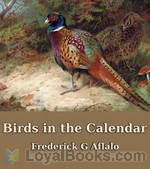 Birds in the Calendar
Birds in the Calendar
Delightful sketches of British wild birds – a bird for every month of the year from the pheasant in January to the robin in December. This collection of articles, reprinted in book form from the periodical The Outlook, is full of fascinating information about bird behaviour and habitat, as well as many interesting anecdotes. Out of date in some respects, particularly in its reference to the (now illegal) collecting of birds’ eggs, this book brings home forcefully how the populations of some British wild birds have declined since it was written. | |
By: G. K. Chesterton (1874-1936) | |
|---|---|
 Orthodoxy
Orthodoxy
Orthodoxy is a book that has become a classic of Christian apologetics. In the book's preface Chesterton states the purpose is to "attempt an explanation, not of whether the Christian faith can be believed, but of how he personally has come to believe it." In it, Chesterton presents an original view of the Christian religion. He sees it as the answer to natural human needs, the "answer to a riddle" in his own words, and not simply as an arbitrary truth received from somewhere outside the boundaries of human experience. | |
By: Gene Stratton-Porter (1863-1924) | |
|---|---|
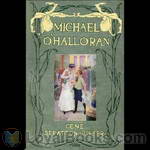 Michael O'Halloran
Michael O'Halloran
The story of a plucky, optimistic newsboy, Michael O’Halloran, who has been orphaned from a young age and asks nothing of the world but to “Be Square!” This is a warm and joyous story of how Michael makes life sunnier for those around him, bringing joy to all who know him. | |
 The Harvester
The Harvester
The Harvester is one of Gene Stratton-Porter’s romantic novels which combine a love of nature, high moral ideals and a good plot. This is the story of a young man who lives in the country side with his dog and other animals and grows herbs to sell to medical drug supply houses. One evening, he has a vision of his Dream Girl and this is the story of his search for her and what happens when he finds her. | |
 Freckles
Freckles
Freckles is a young man who has been raised since infancy in a Chicago orphanage. His one dream is to find a job, a place to belong and people who accept him despite his youth and the disability of having only one hand. He finds this place in the Limberlost Swamp, as Mr. McLean’s Limberlost guard of precious timber.In the process, he discovers a love for the wilderness and animals he encounters every day on his rounds and a burning desire to learn about all the new birds and plants he sees on his rounds every day... | |
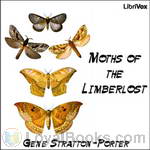 Moths of the Limberlost
Moths of the Limberlost
Gene Stratton-Porter was an American author, amateur naturalist, wildlife photographer, specializing in the birds and moths in one of the last of the vanishing wetlands of the lower Great Lakes Basin. The Limberlost and Wildflower Woods of northeastern Indiana were the laboratory and inspiration for her stories, novels, essays, photography, and movies. She was an accomplished author, artist and photographer and is generally considered to be one of the first female authors to promulgate public positions; conserving the Limberlost Swamp in her case... | |
 Song of the Cardinal
Song of the Cardinal
The Song of the Cardinal is about a big male Cardinal who lives in a tree near a farmer and his wife. The Cardinal immediately starts to sing to find himself a mate. Meanwhile the farmer and his wife enjoy watching this boisterous bird and seeing what he does. He does find a mate and through his singing the farmer and his wife's marriage is rejuvenated. It's a happy little parallel love story that will sweep you off your feet! | |
By: George Francis Scott-Elliot (1862-1934) | |
|---|---|
 Romance of Plant Life
Romance of Plant Life
Romance needs not always indicate a love story. In the series "The Library of Romance", authors look at the romantic side of science. The different books cover all different disciplines, including chemistry, astronomy, engineering, and, as in this case, biology. In this volume, G.F. Scott Elliot walks us through the romantic side of plant life. How do plants move towards the light, what are the dangers to little saplings, how can parts of plants be used for medicine, and why are some of them delicious and others poisonous? Listen to this book to find out. - Summary by Carolin | |
By: George Reginald Marriner (1879-1910) | |
|---|---|
 KEA: a New Zealand problem
KEA: a New Zealand problem
The kea is the world's only alpine parrot, and is endemic to the South Island of New Zealand. Although this large parrot is beloved of modern-day New Zealanders for its cheeky intelligence and mischievous behaviour , it has not always been so loved, and is currently classified as an endangered species. Its decline began in the 19th century, with the arrival of European settlers, their sheep, and the payment of rich rewards to bounty hunters for kea beaks. Written in 1907, The Kea: a New Zealand... | |
By: George S. Anderson | |
|---|---|
 American Big-Game Hunting
American Big-Game Hunting
The first book published by The Boone and Crockett Club founded by Theodore Roosevelt and George Grinnell, who declared in their Editors Note: "Hunting big game in the wilderness is, above all things, a sport for a vigorous and masterful people. The rifle-bearing hunter, whether he goes on foot or on horseback, whether he voyages in a canoe or travels with a dog-sled, must be sound of body and firm of mind, and must possess energy, resolution, manliness, self-reliance, and capacity for hardy self-help... | |
By: George Washington Carver (1864-1942) | |
|---|---|
 How to Grow the Peanut: and 105 Ways of Preparing It for Human Consumption
How to Grow the Peanut: and 105 Ways of Preparing It for Human Consumption
George Washington Carver, in his most famous work, explains how to grow peanuts, the benefits of using them, and 105 recipes that incorporate peanuts. - Summary by Nicholi Volta | |
By: Gertrude Jekyll (1843-1932) | |
|---|---|
 Wood and Garden
Wood and Garden
Wood and Garden reads like a walk through the garden with reknowned garden designer Gertrude Jekyll as she discusses her plant choices and placement, how she integrates nature into her design, and how she maintains and enjoys the garden. | |
By: Gilbert White (1720-1793) | |
|---|---|
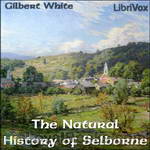 The Natural History of Selborne
The Natural History of Selborne
The Reverend Gilbert White was the curate of the village of Selborne, a village in Hampshire, from 1784 to his death in 1793, living most of his life in the village. The book is in the form of a collection of letters to two friends, discussing the natural history of the areas that he knew, and natural history in general. White’s intense curiosity and his love for the world about him flow through his simple, straightforward style, and a gentle sense of humour colours many of his anecdotes. | |
By: Gregor Mendel | |
|---|---|
 Experiments in Plant Hybridisation
Experiments in Plant Hybridisation
Gregor Mendel (1822 - 1884) was an Augustinian monk in the St. Thomas monastery in Brno. His seminal paper "Experiments on Plant Hybridization" presents his results of studying genetic traits in pea plants. It is the ground breaking work on inheritance, being the first to differentiate between dominant and recessive genetic traits. His work was long ignored and deemed controversial, however, at its rediscovery at the turn to the 20th century, it earned Gregor Mendel the title "father of modern genetics". | |
By: H. Rider Haggard (1856-1925) | |
|---|---|
 The Brethren
The Brethren
Set in the days of the Crusaders, this books tells of a young maiden named Rosamund, and her twin cousins. Godwin is the grey eyed thoughtful man, and Wulf is the blue eyed warrior. They are both knights of England and they are both in love with their fair cousin. But the riddle of the story is which does Rosamund love?The adventure begins when Rosamund is taken from England and carried to the East. The plot thickens as the two young knights follow her in hopes of rescuing her from the Muslim leader, Saladin... | |
By: H. S. Adams (1864-?) | |
|---|---|
 Making a Rock Garden
Making a Rock Garden
A short look at building a rock garden, right from the rocks themselves and how to arrange them, to choosing and placing the plants, touching wall and bog gardens, too. In this little monograph, the author is trying to draw the eyes of U.S. gardeners in to the intimate beauty of this neglected hobby.The original work has a number of attractive and useful photographs and drawings. | |
By: Harrison Weir (1824-1906) | |
|---|---|
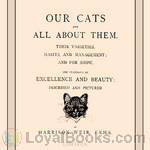 Our Cats and All About Them
Our Cats and All About Them
The Englishman Harrison Weir organized the first cat show in England in 1871. In 1887 he founded the National Cat Club and was its first President and Show Manager until his resignation in 1890.Our Cats and all about them is concerned with cats and all about them. It describes numerous breeds of cats and what to look for in a cat show champion, and deals with the general management and common diseases of cats, as well as how to raise healthy kittens. But there is also a hodge podge of cat related stories, games, nursery rhymes, superstitions, as well as a list of cat lovers and a chapter of "The Cat in Shakespeare". | |
By: Henry Clyde | |
|---|---|
 Pleasure Cycling
Pleasure Cycling
"In this little book, the writer, looking back to his own days of inexperience in cycling, has endeavored to furnish some useful information and advice to those who intend joining the army of wheelmen, or who, in their first season on the road, are beginning to appreciate the healthy pleasure which cycling brings. The book [is] especially intended to aid the amateur rider of the safety bicycle in the intelligent use of his wheel. Further, the writer has attempted, perhaps too emphatically as some may think, to commend the merits of bicycling as a means towards innocent enjoyment and healthy living... | |
By: Henry David Thoreau (1817-1862) | |
|---|---|
 Walden
Walden
Two years, two months and two days! This is what forms the time line of one man's quest for the simple life and a unique social experiment in complete self reliance and independence. Henry David Thoreau published Walden in 1884. Originally drafted as a series of essays describing a most significant episode in his life, it was finally released in book form with each essay taking on the form of a separate chapter. Thoreau's parents were in financial straights, but rich intellectually and culturally... | |
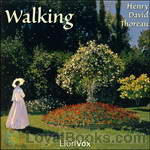 Walking
Walking
This was originally a lecture given by Thoreau in 1851 at the Concord lyceum titled “The Wild” . He revised it before his death and it was included as part of the June 1862 edition of Atlantic Monthly. This essay appears, on the surface, to be simply expounding the qualities of Nature and man’s place therein. Through this medium he not only touches those subjects, but with the implications of such a respect for nature, or lack thereof. | |
 Walking (Version 2)
Walking (Version 2)
This was originally titled "The Wild" and is a lecture given by Thoreau in 1851 at the Concord lyceum. "Walking" is an essay that explores the relationship between man and nature, trying to find a balance between society and our raw animal nature. | |
By: Henry Gray | |
|---|---|
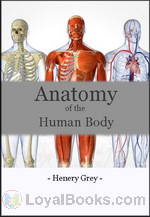 Anatomy of the Human Body
Anatomy of the Human Body
Henry Gray’s classic anatomy textbook was first published in 1858 and has been in continuous publication ever since, revised and expanded through many successive editions. This recording is of the public-domain 1918 US edition (some information may be outdated). | |
By: Henry J. Tompkins | |
|---|---|
 With Swag and Billy: A Guide to Walking Trips in Tourist Districts of New South Wales
With Swag and Billy: A Guide to Walking Trips in Tourist Districts of New South Wales
A guide to hikes around Sydney, Australia, from the early years of the twentieth century. In 1895, Henry J. Tompkins and William Mogford Hamlet, two friends with literary inclinations and a taste for romantic scenery, formed the Warragamba Walking Club. Although the strength of their membership is unknown , the Warragambas also counted John Le Gay Brereton, poet and professor of literature, among their number. Published by the Government Tourist Bureau, With Swag and Billy ran to three editions ... | |
By: Henry Salt (1851-1939) | |
|---|---|
 Life of Henry David Thoreau
Life of Henry David Thoreau
Henry David Thoreau was a fascinating man, contributing vast amounts of information on nature history, leading the way for environmentalism. He also was a philosopher, abolitionist, anarchist, writer, poet, and a bit of a mystery. He is best known for his book 'Walden', and his essay on 'Civil Disobedience'. This early biography by Henry Salt is highly regarded by Thoreau scholars. - Summary by Phyllis Vincelli | |
By: Hiram Bingham (1875-1956) | |
|---|---|
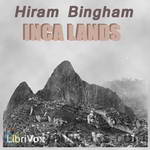 Inca Lands
Inca Lands
Prof. Hiram Bingham of Yale Makes the Greatest Archaeological Discovery of the Age by Locating and Excavating Ruins of Machu Picchu on a Peak in the Andes of Peru.There is nothing new under the sun, they say. That is only relatively true. Just now, when we thought there was practically no portion of the earth's surface still unknown, when the discovery of a single lake or mountain, or the charting of a remote strip of coast line was enough to give a man fame as an explorer, one member of the daredevil explorers' craft has "struck it rich... | |